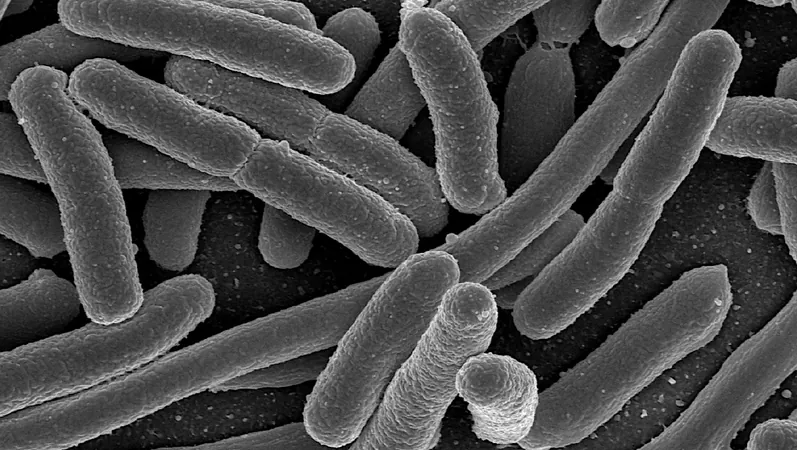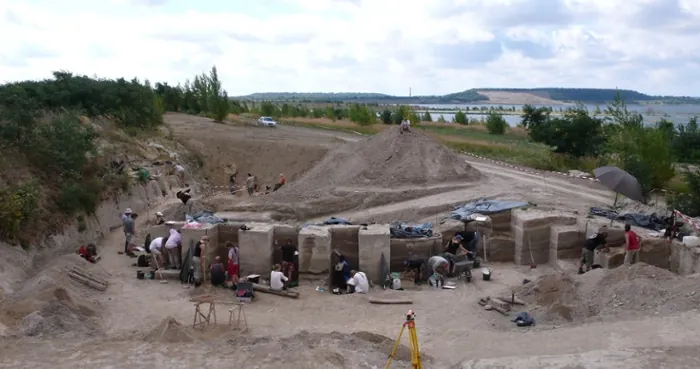
Unveiling the Secrets of Habitability: How Atmospheric Composition Impacts the Growth of E. coli on Exoplanets
2025-01-11
Author: Amelia
Introduction
Researchers are diving into the mysterious realms of exoplanet atmospheres to unlock the secrets of life beyond our planet, focusing on how these atmospheric conditions influence the presence of liquid water and the potential for microbial life.
Defining the Habitable Zone (HZ)
Defining the habitable zone (HZ) around a star is crucial for identifying exoplanets that could support life. The HZ is that sweet spot where temperatures allow for liquid water to exist on a planet's surface. However, being situated within this zone doesn't guarantee habitability; liquid water is just one piece of a much larger puzzle that includes a combination of temperature, pressure, and, importantly, atmospheric composition.
Groundbreaking Study on Habitability
In a groundbreaking study, researchers employed a dual approach to enhance our understanding of habitability. They first evaluated the surface conditions of planets located at the inner edge of the HZ under various atmospheric compositions. Utilizing an advanced 3D climate model, this research marks the inaugural assessment of HZ boundaries for exoplanets with atmospheres rich in hydrogen (H2) and carbon dioxide (CO2).
Biological Aspect: E. coli Experiments
The second part of the study delved into the biological aspect, focusing on the survival and growth of Escherichia coli K-12 (E. coli), a common laboratory bacterium. By conducting controlled experiments, the scientists explored how different atmospheric compositions influence bacterial life. This innovative fusion of climate modeling with biological experimentation provides a direct link between theoretical predictions of climate and observed biological responses.
Key Findings
The results reveal that the atmospheric makeup plays a pivotal role in shaping bacterial growth patterns. This key finding underscores the necessity of examining diverse atmospheric conditions when evaluating exoplanet habitability. Not only does this enhance our understanding of where we might find life, but it also sets the stage for targeted exploration missions in the future.
Broader Implications
Moreover, the implications of this research extend beyond the hunt for extraterrestrial life. Understanding how different gases affect microbial survival can inform us about extremophiles — organisms that thrive in harsh conditions — on Earth and their applications in fields like astrobiology, biotechnology, and environmental science.
Conclusion
As we continue to expand our cosmic reach, this study serves as a beacon of hope and knowledge. The search for alien life is not just about finding liquid water; it’s about understanding the complexity of environments that might nurture life as we know it, or even in forms we have yet to imagine. The universe may be a vast and indifferent place, but these insights bring us one step closer to answering the ultimate question: Are we alone?









 Brasil (PT)
Brasil (PT)
 Canada (EN)
Canada (EN)
 Chile (ES)
Chile (ES)
 Česko (CS)
Česko (CS)
 대한민국 (KO)
대한민국 (KO)
 España (ES)
España (ES)
 France (FR)
France (FR)
 Hong Kong (EN)
Hong Kong (EN)
 Italia (IT)
Italia (IT)
 日本 (JA)
日本 (JA)
 Magyarország (HU)
Magyarország (HU)
 Norge (NO)
Norge (NO)
 Polska (PL)
Polska (PL)
 Schweiz (DE)
Schweiz (DE)
 Singapore (EN)
Singapore (EN)
 Sverige (SV)
Sverige (SV)
 Suomi (FI)
Suomi (FI)
 Türkiye (TR)
Türkiye (TR)
 الإمارات العربية المتحدة (AR)
الإمارات العربية المتحدة (AR)